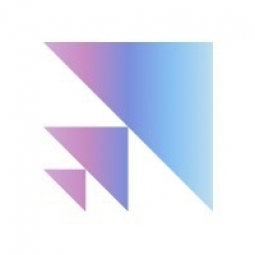下载PDF
Copymint Prevention for NFT Marketplaces: A Case Study on OpenSea
技术
- 分析与建模 - 实时分析
- 平台即服务 (PaaS) - 应用开发平台
适用行业
- 水泥
- 电子商务
适用功能
- 采购
用例
- 欺诈识别
- 实时定位系统 (RTLS)
服务
- 系统集成
挑战
OpenSea 是全球领先的不可替代代币 (NFT) 市场,在检测和减少复制和欺诈方面面临着重大挑战。 Copymint 是流行 NFT 的复制品或模仿品,可能会欺骗用户,尤其是那些刚接触 NFT 世界的用户。信任和安全对于欢迎新人进入 Web3 生态系统至关重要,OpenSea 正在寻找供应商来帮助提高其检测和删除能力。该团队已经使用基于规则的系统来捕获各种形式的欺骗行为,但要达到有效解决市场欺诈所需的所需速度、召回率和精度是一个挑战。
关于客户
OpenSea 是世界上第一个也是最大的不可替代代币(NFT)市场。该平台允许客户在七个不同的区块链上浏览、购买、销售和铸造 NFT。 OpenSea 的使命是建立开放的数字经济,帮助世界各地的创作者、收藏家和合作者直接拥有并塑造他们的关系。该公司是 Web3 生态系统的领导者,致力于确保用户的信任和安全,特别是那些刚接触 NFT 世界的用户。
解决方案
OpenSea 与 Scale 合作实施了行业领先的解决方案,该解决方案可以识别和处理一组动态的欺骗性 NFT。规模内容理解通过丰富、分析和分类内容来提供数据增强,以获得更好的平台体验。在针对 OpenSea 每周高达 5000 万个项目的高数据量的测试中,它被证明是强大的。 Scale 提供了一种快速周转的模型即服务解决方案,可以对给定的 NFT 进行分类并确定其是否与另一个 NFT 非常匹配。该解决方案包括通过基于 API 的解决方案进行实时检测,并进行完整目录扫描以消除历史诈骗。缩放经过训练的自定义深度学习图像模型,将 NFT 表示为流形中的嵌入,从而允许相似的项目位于附近,并且显着不同的项目彼此之间具有更远的距离。此设置有助于通过 k 最近邻算法进行实时查询和检索。
运营影响
数量效益
相关案例.

Case Study
System 800xA at Indian Cement Plants
Chettinad Cement recognized that further efficiencies could be achieved in its cement manufacturing process. It looked to investing in comprehensive operational and control technologies to manage and derive productivity and energy efficiency gains from the assets on Line 2, their second plant in India.

Case Study
Digital Transformation of Atlanta Grout & Tile: An IoT Case Study
Atlanta Grout & Tile, a Tile, Stone & Grout restoration company based in Woodstock, Georgia, was facing challenges with its traditional business model. Despite steady growth over the years, the company was falling behind the web revolution and missing out on the opportunity to tap into a new consumer base. They were using independent software from different vendors for each of their department information and workforce management. This resulted in a lot of manual work on excel and the need to export/import data between different systems. This not only increased overhead costs but also slowed down their response to clients. The company also had to prepare numerous reports manually and lacked access to customer trends for effective business decision-making.

Case Study
Revolutionizing Construction Equipment Rental: A Case Study on ProsRent and ENO8
ProsRent, a startup that won the 'Best Financial Opportunity' and 'Best Pitch' at CodeLaunch 2016, aimed to revolutionize the way construction professionals source and rent heavy equipment. In the construction industry, project managers and contractors typically rent heavy equipment from supply companies. However, predicting inventory can be challenging, and finding the required equipment at the right time and place can be a hassle. If the preferred vendor doesn't have the required equipment, it results in wasted time and money in searching for it, often leading to higher costs due to non-preferred rates and increased delivery costs if the vendor is located far from the job site. Suppliers, on the other hand, desired access to a wider base of trusted renters that they didn't have to vet themselves and wanted to offer dynamic rental pricing based on demand and availability in their market. ProsRent's challenge was to produce a minimum viable product that was fast and first to market but also strong enough to engender loyalty and repeat business from the target market.

Case Study
IoT Solution Enhances Comfort and Energy Efficiency at Apple Valley Commons Office
Apple Valley Commons, a mixed-use office complex built in 1986, was facing significant comfort and energy efficiency challenges. The building, which houses a variety of businesses, was experiencing extreme temperature imbalances, causing discomfort to employees and clients. Despite outdoor temperatures being consistently high during summers, occupants had to use space heaters to keep warm. The electricity bills from the constant operation of the heat pump were exorbitant. The building's elevator room on the roof was also overheating, reaching temperatures of 130 to 140 degrees, causing the elevator equipment to shut down. The building's existing controls solution did not provide a front end for diagnostics or remote control. The building management was seeking a solution that could address these temperature issues, improve occupant comfort, reduce operational costs, and increase building visibility.

Case Study
Revamping EE's Legacy ERP: A Case Study on BT's Strategic Transformation
EE, even after its merger with BT, was operating its ERP estate on legacy infrastructure, hosted on the premises of a third-party supplier. This outdated system resulted in a volume-based operational model, higher time to market, longer delivery cycles, and unsatisfactory customer experience. BT recognized the need for a strategic transformation of these aging ERP systems and sought a partner who could proactively manage application services. The partner was also expected to handle development requirements associated with application management services, drive accountability, and ownership with a time and target-driven transformation of these services. BT's primary goals were to improve customer experience, reduce cycle time, and measure these improvements with precision.






